#poison roald dahl
Explore tagged Tumblr posts
Text
Film bro lesbian era pt 2
Okay so I'm gonna rate my fav films I've watched recently bc I'm such a total film expert and I totally know what I'm talking about (I don't) trying to remember all the stuff I've watched is a task in itself omg
Moulin Rouge - 8/10 SLAY although it depressed me greatly. Everyone in the cast ate it up and the music was literally incredible but the little jukebox moment threw me off a little
10 things I hate about you - 9/10 so cute!! Watched this because Moulin Rouge made me so miserable but you can't beat a classic no complaints
Poison - 8/10 Benedict Cumberbatch scares me sometimes but this was actually really good, probably my favourite of all the Roald Dahl/Wes Anderson films that just dropped on Netflix
The Rat Catcher - 6/10 no idea what was going on tbh wasn't as easy to pay attention too but the cinematography was rly good (I'm not a media expert so idk) only short so you might as well watch it
The Wonderful Life of Henry Sugar - 8/10 I enjoyed this way more than I thought I would! The story is really interesting but I feel like that's a given - odd time to drop all these films tho? idk maybe that's just me
The Menu - 10/10 SO GOOD I actually felt like a real film bro for a sec bc I loved this and I rarely agree with anyone ever. Cast was incredibly obviously cannot recommend enough but how did it take me so long to watch this???
My brain is rotting so sorry if this makes 0 sense
#moulin rouge#poison roald dahl#wes anderson#the rat catcher#the wonderful life of henry sugar#the menu#10 things i hate about you
3 notes
·
View notes
Text
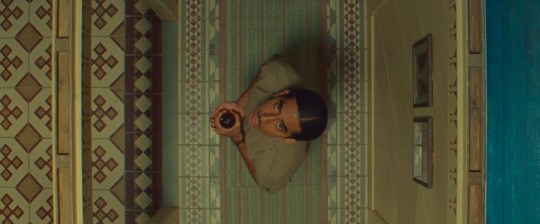


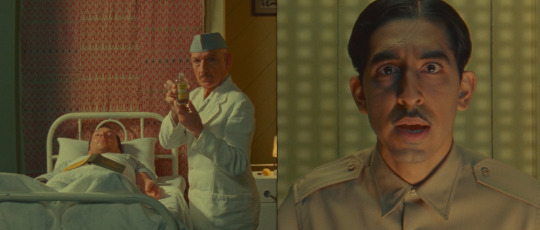

poison (2023)
#poison#film#short film#movie#cinema#art#edit#screencaps#photography#cinematography#2020s#wes anderson#benedict cumberbatch#dev patel#ben kingsley#roald dahl#queue
196 notes
·
View notes
Text





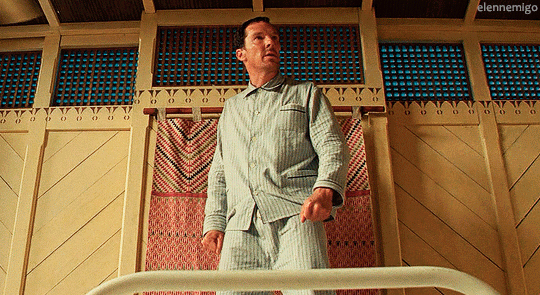
POISON (2023 short) | Directed and Adapted by Wes Anderson.
BENEDICT CUMBERBATCH (as Harry Pope), DEV PATEL, SIR BEN KINGSLEY and RALPH FIENNES.
#poison#roald dahl´s poison#benedict cumberbatch#wes anderson#Netflix#netflixedit#tvedit#moviegifs#cinematv#cinemapix#userbbelcher#chewieblog#userelysia#useraurore#tuserpris#noalook#fyeahmovies#dailyflicks#dailynetflix#elegifs#this man is amazing!#dev patel#ben kingsley
206 notes
·
View notes
Text


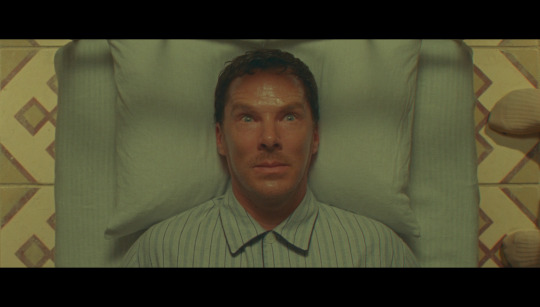

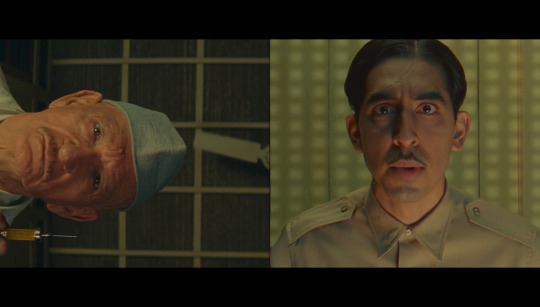



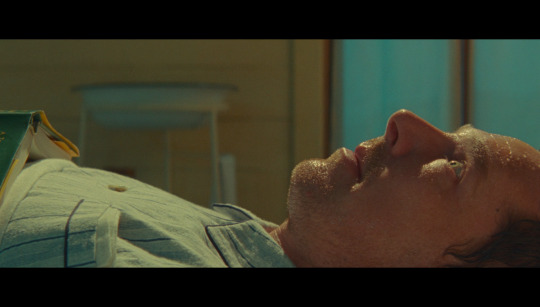
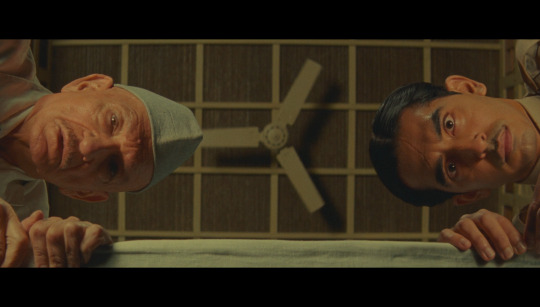
Poison (Wes Anderson, 2023)
#films watched in 2023#Poison#Wes Anderson#Anderson#2023#short film#Netflix#seis#Benedict Cumberbatch#Dev Patel#Ben Kingsley#Roald Dahl#Ralph Fiennes#literature#hands#medicine#bed#split screen
125 notes
·
View notes
Text
#today on tumblr#wes anderson#henry sugar#the wonderful story of henry sugar#the swan#the rat catcher#poison#ben kingsley#ralph fiennes#wes anderson movies#roald dahl#wesblr#filmblr#benedict cumberbatch#wes anderson style
80 notes
·
View notes
Text
a look at poison by wes anderson.
Poison is by far my favorite of the four short film adaptations Wes Anderson has put out of Roald Dahl's short stories. Poison tells the story of Harry Pope, a white British soldier who fears that a krait, a poisonous snake, has crawled under his covers and is poised to bite him. He is helped by Timber Woods, an Indian-British soldier, and Dr. Ganderbai, a local Indian doctor. The film takes place at Woods’s house, where Harry Pope is staying, in British-ruled India. The film, like the other stories in the Dahl collection, is shot like a play, with stunning set work and stagehands at the ready to help with props.
The basic story, if you haven’t watched the film yet (which you should), is this: Woods drives home and finds Harry Pope laying in bed very, very still. Pope tells him that while he was reading in bed, he saw a krait crawl under the covers and fall asleep on his stomach. He has been lying still and silently since then. At first, Woods proposes that he, armed with a knife, pull back the cover, brush off the snake, and cut the snake and suck out any poison himself. Pope is scornful toward the idea, calling Woods an idiot, and tells him to call for a doctor. Woods calls Dr. Ganderbai, who makes his way over quickly. He first administers some serum to Pope, so that if he is bitten he (maybe) will be safe regardless. After debating with himself outside of the room, he decides to soak the mattress in chloroform, hopefully sedating the krait and saving Harry Pope. Dr. Ganderbai painstakingly funnels the chloroform to the mattress. For 15 minutes, the trio wait in silence, with Dr. Ganderbai staring furiously at Pope, after he has a loud outburst. The smell of the chloroform reminds Woods of an operation he went through, which left a scar on his forehead. Finally, Dr. Ganderbai and Woods prepare to lower the cover and remove the krait. When the cover is removed, the krait is not there. Dr. Ganderbai remarks that the krait could be anywhere, even up the pajama leg. At this, Pope, who has been growing increasingly twitchy, jumps up on the bed and moves furiously. When he does not die of snake bite, the room goes quiet. The camera work at this point has gone shaky, and the lighting flickers while a heartbeat plays in the background of the scene. Dr. Ganderbai teases, lightheartedly, that perhaps Pope dreamt up the snake. Snake hissing is now audible. Pope does not take the teasing jokingly however and is offended. He explodes at Dr. Ganderbai, yelling abusive, racially motivated insults. When Dr. Ganderbai breaks a chair and storms out the room, the lighting stabilizes, as does the camerawork, and silence permeates the set. Woods follows Dr. Ganderbai out the house and tells him that Pope doesn’t know what he’s talking about and that he (Dr. Ganderbai) saved Pope’s life. Dr. Ganderbai says, “No, I didn’t.” Woods tells him that Pope owes him his life. Dr. Ganderbai says “No, he doesn’t.” Woods apologizes. Dr. Ganderbai looks at Woods and says, “You can’t be.” With that, the film is over.
If you still haven’t watched the short film, then go do that. My summary does not do it justice.
This story is run in part by the three characters and the subtext in all of their interactions. Harry Pope is a white, British soldier. Timber Woods is an Indian-British soldier. Dr. Ganderbai is Indian and notably an outsider to the British military. Harry Pope and Timber Woods live on a British Jute and Woods is dressed in a British military outfit. At the beginning, the power hierarchy is not apparent. After all, Pope is immobilized in bed and cannot do anything to aggravate the krait, leaving him quiet and subdued up until the last minutes of the film. However, he is still expressive enough with Woods noting, “The expression was in the eyes and around the corners of the mouth, as you can see.” He manages to be derisive in his interactions with the two men, as is apparent when he calls Woods an idiot and snaps at Dr. Ganderbai: “Get on with it!” His clothing are a pair of light blue pajamas, simple at first glance, though Woods notes that he has a fly button made of mother-of-pearl. Woods remarks that he has never had a fly button, let alone a mother-of-pearl button. This is another difference between the two soldiers, their wealth. However, even in these interactions, Dr. Ganderbai and Woods treat him with kindness and patience. Everything that he is doing is attributed to the stress that the stillness is putting him under, with Dr. Ganderbai calling his behavior understandable up until this point.
Dr. Ganderbai approaches the situation with kindness and urgency. He takes every care to reassure Pope that he is in safe hands throughout the crisis. He only starts to lose his patience when Pope also loses his nerve. After Pope’s second outburst (“I can hear him!”), he stares at him, with Woods thinking that he is probably thinking something along the lines of this: “Don’t move, don’t speak! Damn you, you’re not spoiling this now, you hear me?” Even in his anger, he is silent and considerate of the life-threatening situation at hand.
Woods, the narrator of the whole story, is also considerate and kind. His first scene shows him turning the headlights of his car off immediately, so as not to disturb the possibly sleeping Harry Pope. He takes his shoes off (in his own house), following Pope’s peculiar, distressed orders. He is prepared to literally suck venom out of Pope’s stomach and even agrees with Pope’s assessment that he is an idiot for not thinking of calling a doctor sooner. He is thoughtful of Pope, despite the discomfort brought upon him by the whole situation, be that by Pope’s twitching and his derisive tone (“I didn’t like that. I didn’t like the way he talked either.”), or the smell of chloroform, which seems to remind him of an injury he incurred, possibly by explosion (this is entirely surmised through choice of words and is not definitive). Woods is only non-complacent when Pope does the inexcusable, though even afterwards he apologizes for Pope.
The playing field, which had Pope more or less at the bottom the entire time, switches the minute Pope is offended at Dr. Ganderbai’s joke. It is now that race bulldozes its way into the story. Pope is a white soldier belittling an Indian doctor who has just taken painstaking measures to save his life. These two represent the two opposite ends of the tense atmosphere that was all of British-ruled India. Pope’s twitchiness, everpresent while he was arrested by the snake, explodes via the words every white supremacist has felt when confronted with somebody of a “lesser” race. The intricacies are most beautifully conveyed via subtext in the ending, which apparently has confused other viewers of the film. The dialogue goes something like this:
“You saved his life.”
“No, I don’t think so.”
“I- I mean, you might’ve- He owes you his life, I mean, he owes you his life, doctor.”
“No, he doesn’t.”
Beat.
“I’m sorry.”
“You can’t be.”
Dr. Ganderbai refuting that Pope owes him his life, isn’t a show of humility. It’s the caste systems reasserting itself. Dr. Ganderbai knows that there is no way that Harry Pope, a white soldier, owes anything, let alone his life to an Indian. And when Dr. Ganderbai tells Timber Woods that he cannot be sorry, it is not because he thinks that Woods should not apologize on Pope’s behalf, it is because Woods literally cannot be sorry or remorseful. He is a part of the system, though he may not have the same power as Harry Pope. Timber Woods, after all, is a British soldier. He wears the British uniform and lives in a British jute. How can he be sorry, when he wears the uniform of the institution that created the circumstances where Dr. Ganderbai can be treated like that?
The other driving force of the story, as is the case in any Wes Anderson film, is the camera work and editing. It is most evident in the climax. The minute Harry Pope jumps on his bed, the camera goes shaky-hand and the lighting flickers. A heartbeat plays throughout the following scene. Up until this point, the camera has been steady and smooth, emphasizing the play-like feeling the story holds. When the fourth-wall is broken, it reminds the audience that this is a play, or it should be treated like one. The shift happens right before Dr. Ganderbai enters Pope’s room to administer chloroform. The last look he gives is one that is severe, a sign of the tense scene to follow. When Woods interprets Dr. Ganderbai’s silence, that is also a moment where the fourth wall is broken. Dr. Ganderbai steps forward and a spotlight is shown on him. We are still in a play element. With the shaky camera work, the breaks are more personal and feel more like a call for help or affirmation that they (Woods and Dr. Ganderbai) are not the only ones seeing this. It is also in the context of the shaky camera that the snake is most “visible.” A rattling noise plays in the underscore of the entire scene. Right before Pope opens his mouth to start his rant, a snapping sound is heard, like a snake snapping its mouth closed. The feeling of suspense, of danger, is helped by Woods whispering again, as though the snake has reappeared. The heartbeat goes unsteady and varies in volume and rhythm. When Dr. Ganderbai leaves the room and Woods pulls a knife on Pope to get him to shut up, the heartbeat stops, as if dead. The lighting evens out and we go back to the steady camerawork. The shaky hand makes the moment, the crucial climax, feel real and immerses the audience even further. The last break is when Woods makes eye contact with the camera after Dr. Ganderbai tells him he cannot be sorry, with a sort of somber look. Finally, one last little touch is the book that Harry Pope is reading, The Golden Lotus. Though I personally have never read it, it is a story about two women who are fighting for prestige in their clan, which is declining in power. A fitting story for a British man to be reading, I think.
Poison is a masterclass in subtext and should be required viewing for anybody trying to be a visual storyteller. It is my favorite of the short films released and every time I think of it and the story it tells, I cry. It won’t be the most relatable for any caucasian viewers, but as somebody who has been micro aggressed in my workplace more times than I can count, with seemingly no motivation, I don’t care. It’s brilliant.
20 notes
·
View notes
Text
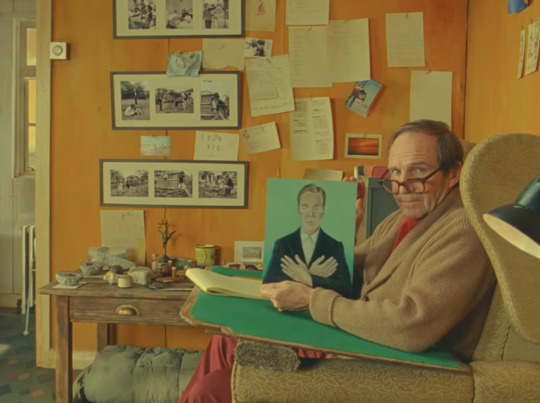
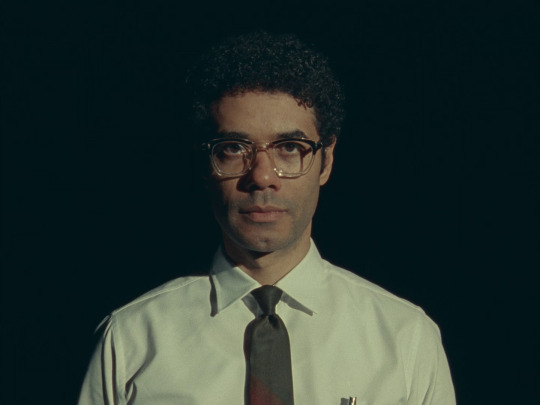



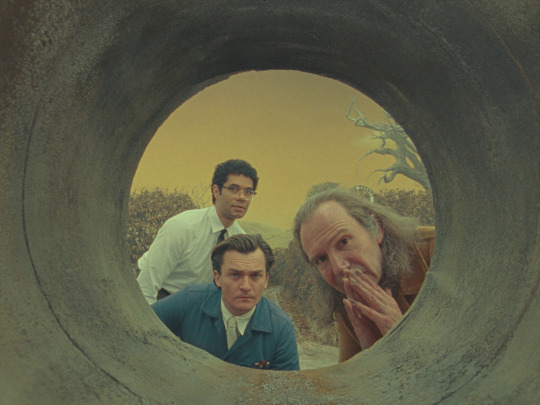
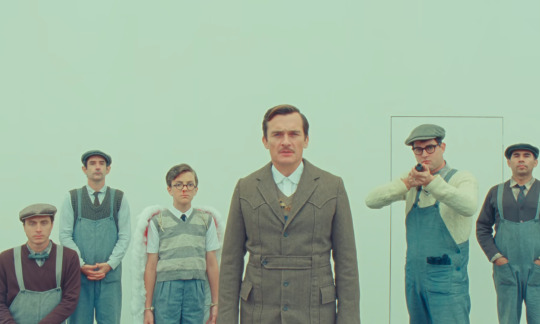


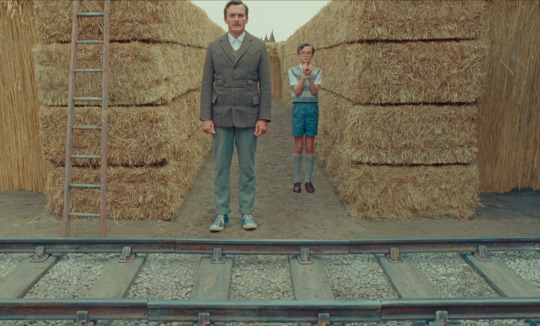
"The Wonderful Story of Henry Sugar" is a 2023 American fantasy short film written, co-produced, and directed by Wes Anderson. The film is the first of a four-part series of shorts adapted from Dahl's short stories, including "The Swan", "The Ratcatcher" and "Poison". Development on the project began in January 2022, with most of the cast signed on. Principal photography took place in London that month.
#The Wonderful Story of Henry Sugar#roald dahl#wes anderson#ralph fiennes#Poison#The Ratcatcher#richard ayoade#rupert friend#The Swan#production design#set design#benedict cumberbatch
14 notes
·
View notes
Text
i could listen to benedict cumberbatch, ralph fiennes, dev patel, rupert friend or richard ayoade reading roald dahl stories all day.
#roald dahl#netflix#THE STORIES ARE AMAZING.#the rat catcher#the swan#poison#benedict cumberbatch#richard ayoade#dev patel#ralph fiennes#rupert friend#tales of the unexpected#the wonderful story of henry sugar
13 notes
·
View notes
Text
POISON (2023):
Man lies still bed
When snake slithers in his sheets
Doc must get it off
youtube
#poison#random richards#poem#haiku#poetry#haiku poem#poets on tumblr#haiku poetry#haiku form#poetic#wes anderson#roald dahl#benedict cumberbatch#dev patel#ben kingsley#ralph fiennes#eliel ford#Benoit herlin#short film#netflix#Youtube
5 notes
·
View notes
Text

#wes anderson#2023#The Wonderful Story of Henry Sugar#The Swan#The Rat Catcher#Poison#2023/226#roald dahl#netflix
11 notes
·
View notes
Text

Poison
directed by Wes Anderson, 2023
8 notes
·
View notes
Text
Absolutely love Wes Anderson's Roald Dahl adaptations! Binged all 4 in one sitting, fantastic cast, wonderful story telling and clever sets as always.

#wes anderson#roald dahl#netflix#the wonderful story of henry sugar#poison#the swan#the rat catcher#benedict cumberbatch#ralph fiennes#rupert friend#dev patel#ben kingsley#richard ayoade
13 notes
·
View notes
Text
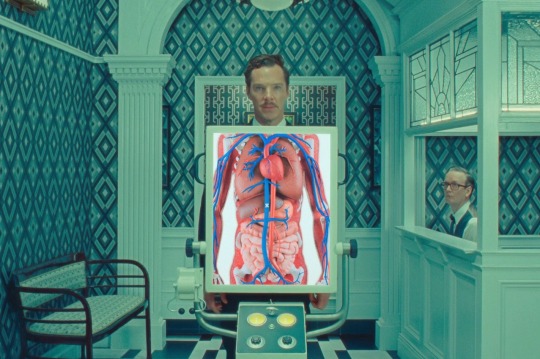
The Wonderful Story of Henry Sugar (dir. Wes Anderson).
Netflix's series of four ultra-faithful short film adaptations of the many works of British children's author Roald Dahl are whimsically irreverent. Translated quite literally with actors narrating or repeating the literary text almost verbatim, Anderson blends his own unmistakable filmmaking style perfectly with Dahl's magical surrealism. Benedict Cumberbatch stars as the titular all-seeing gambler amidst a well-casted ensemble. While Henry Sugar is the clear standout of the bunch as thirty-seven minutes of pure joyful wonder, all four shorts feature impeccable production design and fun performances from its recurring cast.
See also: The Swan, The Rat Catcher, and Poison, all written and directed by Anderson, starring the same cast, and available to stream on Netflix
#henry sugar#netflix#netflix original#netflix film#netflix movie#short film#roald dahl#wes anderson#streaming#reviews#features#the swan#the rat catcher#rat catcher#poison#short films#american imperial pictures#indian paintbrush#benedict cumberbatch#ralph fiennes#dev patel#ben kingsley#richard ayoade#rupert friend
4 notes
·
View notes
Text

Seen in 2023:
Poison (Wes Anderson), 2023
#films#movies#shorts#stills#Poison#Wes Anderson#Ben Kingsley#2020s#Roald Dahl#stories#adaptations#seen in 2023
2 notes
·
View notes
Text


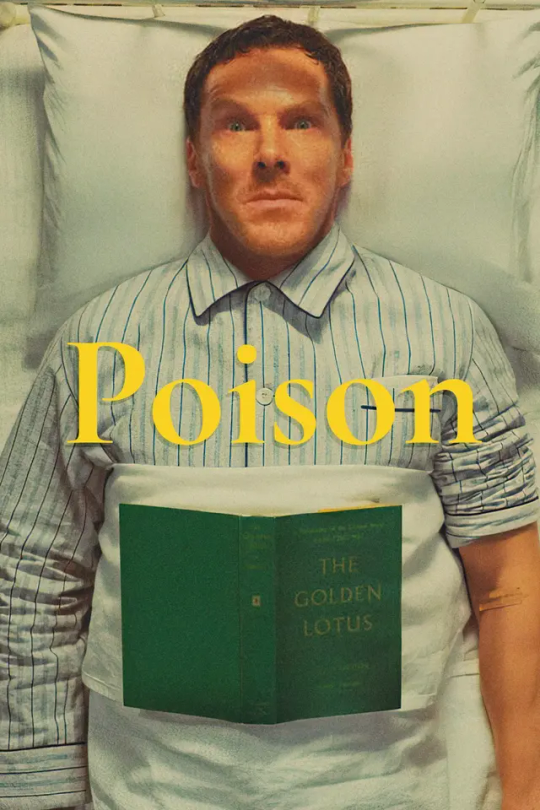
October 9th, 2023
Since these are all so short, I decided to finish off the Wes Anderson/Roald Dahl collection on Netflix as one installment this evening. All three of these were as unique as Henry Sugar, though also a great deal darker. While I wouldn't place them under the horror genre I would say these three shorts might be as close as Anderson will ever get.
I think I appreciated the fact that, rather than attempt to fluff up and expand the stories into feature length movies, Anderson just took the time he needed to tell each story. An interesting experiment in both narrative and cinematography that I would call a success. Anderson obviously isn't the first director to experiment with short film, but I love that he created a cinematic collection of short stories while somewhat stepping out of the traditional anthology format.
6 notes
·
View notes
Text










"The Wonderful Story of Henry Sugar", is a 2023 American fantasy short film written, co-produced, and directed by Wes Anderson The film is the first of a four-part series of shorts adapted from Roald Dahl's short stories, including "The Swan", "The Ratcatcher" and "Poison". Principal photography took place in London in January 2022.
#wes anderson#the wonderful story of henry sugar#the swan#richard ayoade#the ratcatcher#poison#roald dahl#dev patel#ralph fiennes#rupert friend#ben kingsley#benedict cumberbatch
5 notes
·
View notes